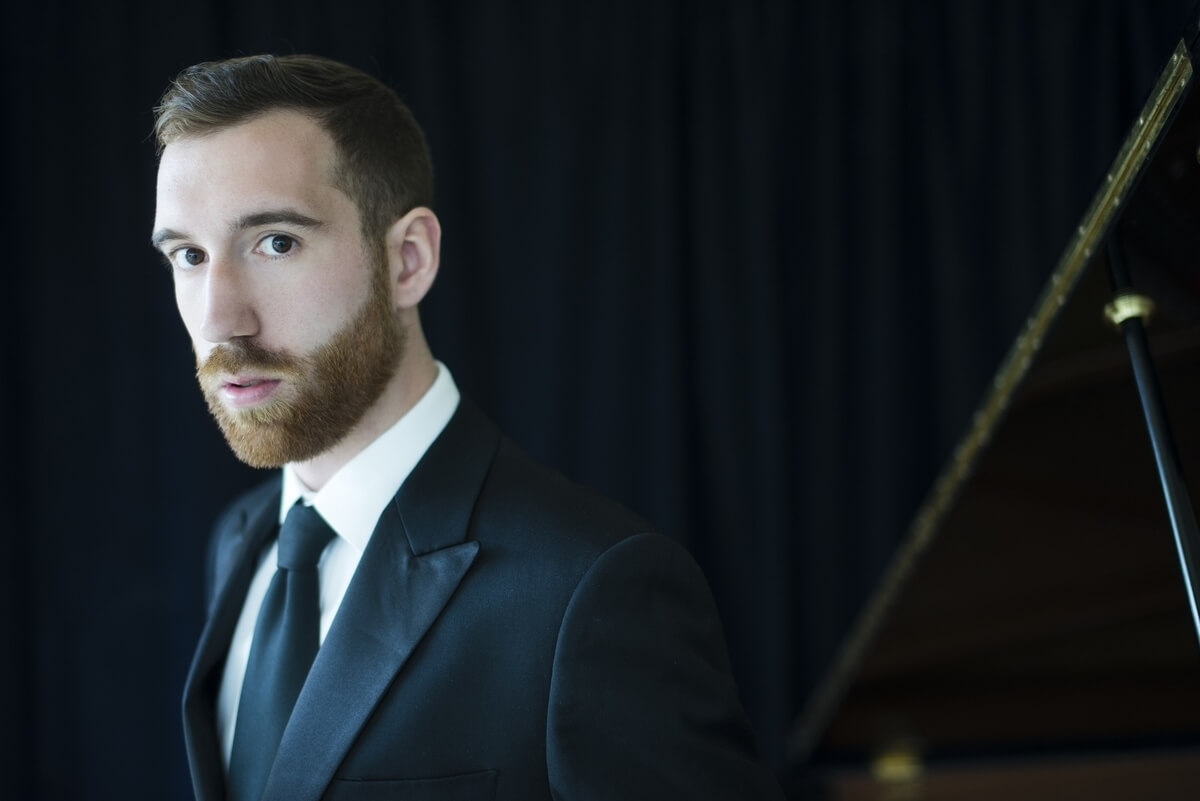
When it first became apparent that the time-honoured rhythm of daily practice culminating in a weekly lesson with a piano teacher would be completely ruptured by COVID-19, there were probably legions of children celebrating the end of practising their scales. But without missing a beat, piano teachers went from being studio-based practitioners to virtual piano pedagogues, quickly enough that their students experienced minimal interruption.
The turning point was the second week of March. “On a fateful Friday the 13th, I was ostensibly laid off four jobs on one day as a member of the gig economy,” reports Winnipeg-based Ludwig Van Toronto contributor Holly Harris, who is also a veteran piano teacher, music educator, and composer. “It became crystal clear that in-person lessons were no longer viable, nor wise.”
For David Potvin, a Doctoral of Musical Arts candidate at the University of Toronto, who teaches at the Kingsway Conservatory and has private students, his last in-person lesson was March 12. The fact that it was March break gave him the time to transfer his base from the Conservatory to his home studio.

This was not a minor endeavor. Potvin had to contact 20 parents and students, offer the virtual option, and then instruct them in how to get up to speed on the technology needed at their end to facilitate a lesson. The IT sophistication of the students and their equipment ranged widely. Potvin approached this challenge by preparing a written guide on how to use Zoom, including how to adjust the audio settings. As thorough as this document was, the mysteries of Zoom still baffled some. One adult student downloaded the program on one device in her home, but then tried to use a different device for her lesson, expecting that it platform would work on both. This is a common experience for some older digital dabblers: if the Cloud transfers features and apps across devices, why wouldn’t Zoom?
He spent close to a full day setting up cameras in his home so his students could see his keyboard from optimal angles. In addition, he created online dictation books using Google docs for each student, and coordinated the scanning and electronic transfer of each student’s music. Prior to that, students were coming to lessons with their paper scores and notebooks. Potvin received no remuneration for all this prep — it’s one of the many unmeasured costs of COVID-19.
Harris says she spent the same week, “Preparing, embarking on a self-imposed crash course to get up to speed. First, I contacted all my students via email to see if they wished to continue with virtual lessons, consulted with colleagues through the Manitoba Registered Music Teachers Association, took a deep dive into whatever webinars I could get my hands on online, and combed through an ever-growing treasure trove of websites and links regarding remote teaching, including best practices and what NOT to do. I also plunged myself into the world of video conferencing apps, sourced and compared different USB microphones and “gear,” as well as learned how to adapt to students’ varying technical needs (primarily Mac vs. PC users, but also differences between using tablets and Smartphones). I needed to learn how to do this, and learn it fast. “
By March 19, Harris was ready to welcome her first student into her virtual studio. “I basically held my breath for that first lesson, not knowing how, and even if this decidedly 21st century approach to private music teaching would work. My first student, a delightful seven year old girl, Lilly, as with almost all my students, barely blinked, as the kids are completely at home with technology. I’ve been constantly amazed, humbled and inspired by my students’ resilience, chameleonic ability to adapt to new circumstances, as well as their openness and willingness to join me on this grand new adventure.”

Potvin was ready to go on March 18. For both teachers, it’s been a period of adjustment musically, pedagogically and energetically. There were predictable technological frustrations such as trying to get decent view of the students’ keyboard, and it was more tiring. “I found myself raising my voice,” comments Potvin, “and looking at the screen so much is tiring to the eyes.” For Harris, “Teaching remotely demands significantly more energy for communicating through a computer screen, and hearing as clearly as possible what your student is playing.”
But both teachers found some unexpected benefits.
“To my surprise, the instruction has been better in some ways,” reports Potvin. “The students have to listen more. This is especially true of my youngest students, who aren’t that advanced yet.” Harris discovered that, “A fantastic bonus has been getting to see exactly what kind of instrument your student is playing at home — and I’ve already noticed new, stronger, more wonderful and deeper bonds forming between myself and my students resulting from this more personal connection.”
Both teachers quickly discovered that their style of teaching had to change.
“I often play along with my students, or tap the rhythm, or sing with their playing,” explained Potvin, “but you can’t do that because of the delay in Zoom,” Harris echoes Potvin. “Say goodbye to performing duets with your students due to unsettling delays. Also, the teacher needs to show and demonstrate more, and talk way, way less. Imitation becomes a handy tool in your teaching arsenal, and I strongly believe students will develop their ear training skills more effectively with this approach. These are all good, sound pedagogical principles, but they become especially important with virtual teaching.”
That Potvin and Harris are models of adaptability isn’t surprising. Pianists become used to making in-the-moment adjustments during performance, adapting to a new piano in a performance venue, or making a quick recovery after a minor lapse while playing a piece. Learning to improvise means more than creating variations in a composition at the keyboard, it generalizes to a can-do attitude in the face of change.
But what is the adjustment like for the students and their parents? We’ll look at that side of the experience in the next instalment of this feature.
#LUDWIGVAN
Want more updates on classical music and opera news and reviews? Follow us on Facebook, Instagram or Twitter for all the latest.



